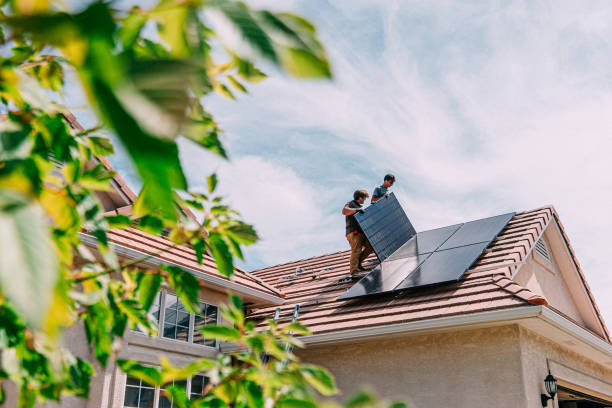Understanding Metal Roof Panels: Functions, Types, and Benefits
Metal roof panels have gained significant popularity in residential and commercial construction due to their durability, versatility, and energy efficiency. These roofing materials represent a substantial upgrade from traditional asphalt shingles, offering longer lifespans and improved performance in various weather conditions. As building technology advances, metal roofing continues to evolve with new designs, materials, and installation techniques that enhance their functionality and aesthetic appeal.

Key Functions of Metal Roof Panels Explained
Metal roof panels serve multiple critical functions in protecting structures. The primary purpose is weatherproofing—creating an impenetrable barrier against rain, snow, and other precipitation. Unlike conventional roofing materials, metal panels feature interlocking systems that minimize the risk of leaks while allowing for thermal expansion and contraction. Additionally, metal roofing provides structural reinforcement through its lightweight yet rigid composition, reducing stress on the building’s framework. Many modern metal panels include integrated ventilation systems that help regulate attic temperatures and moisture levels, contributing to the overall energy efficiency of the building. The reflective properties of metal surfaces also play a crucial role in deflecting solar radiation, helping maintain comfortable indoor temperatures without excessive cooling requirements.
How Metal Roof Panels Improve Durability in Homes
The exceptional durability of metal roof panels represents a significant advantage for homeowners seeking long-term roofing solutions. Steel, aluminum, copper, and zinc panels typically last 40-70 years—far exceeding the 15-30 year lifespan of traditional asphalt shingles. This longevity stems from metal’s inherent resistance to common roofing problems: it won’t crack, split, or rot over time. Metal panels demonstrate remarkable resilience against extreme weather conditions, including high winds (many are rated for 140+ mph gusts), heavy snow loads, and intense sunlight. Their non-combustible nature provides improved fire resistance compared to conventional roofing materials. Additionally, metal’s imperviousness to insects, mildew, and rot ensures the structural integrity remains intact throughout decades of service. Modern protective coatings further enhance durability by preventing corrosion, color fading, and chalking that might otherwise occur from environmental exposure.
Different Types of Metal Roof Panels and Their Applications
The market offers diverse metal roofing panel styles, each suited for specific architectural designs and functional requirements. Standing seam panels feature vertical legs with concealed fasteners, creating a sleek, contemporary appearance ideal for modern homes and commercial buildings. These panels excel in areas with heavy rainfall due to their superior water-shedding capabilities. Corrugated and ribbed panels, recognized by their wavy or ridged profiles, provide economical solutions for agricultural buildings, sheds, and industrial facilities. Metal shingles and tiles mimic the appearance of traditional roofing materials like clay tiles, slate, or wood shakes while delivering metal’s durability benefits—making them popular for heritage homes and upscale residential properties. Interlocking panels offer streamlined installation and enhanced wind resistance through their interconnected design. The material composition varies widely, with galvanized steel providing cost-effective durability, aluminum offering corrosion resistance in coastal environments, copper delivering distinctive patina development over time, and zinc providing self-healing properties for maximum longevity.
Benefits of Using Metal Roof Panels for Long-Term Roofing
The long-term advantages of metal roofing extend beyond mere durability. From an economic perspective, while the initial installation costs exceed traditional roofing materials, the extended lifespan and minimal maintenance requirements create substantial lifetime value. Metal roofs typically require only periodic inspections and occasional cleaning to maintain optimal performance. Energy efficiency represents another significant benefit, with reflective surfaces reducing cooling costs by up to 25% in warm climates. Many metal roofing products qualify for energy efficiency tax credits and rebates, further enhancing their cost-effectiveness. Environmental considerations also favor metal panels—they’re manufactured with significant recycled content (often 25-95%) and remain 100% recyclable at the end of their service life. The lightweight nature of metal panels (typically 1-3 pounds per square foot) reduces structural load requirements and sometimes permits installation over existing roofing materials, eliminating costly tear-off and disposal processes. Modern manufacturing techniques have expanded aesthetic options dramatically, with panels available in numerous colors, finishes, and profiles to complement any architectural style.
Metal Roof Panel Cost Considerations and Options
The investment in metal roof panels varies significantly based on material type, panel profile, installation complexity, and regional factors. Entry-level galvanized steel panels typically range from $5-12 per square foot installed, while premium materials like copper can reach $15-25+ per square foot installed. The table below provides a general comparison of common metal roofing options:
| Material Type | Average Cost (Installed) | Expected Lifespan | Key Features |
|---|---|---|---|
| Galvanized Steel | $5-12 per sq ft | 40-60 years | Economical, widely available, moderate corrosion resistance |
| Aluminum | $7-15 per sq ft | 50+ years | Lightweight, excellent corrosion resistance, ideal for coastal areas |
| Steel with Stone Coating | $8-16 per sq ft | 40-70 years | Combines metal durability with traditional appearance, impact resistant |
| Zinc | $12-18 per sq ft | 60-100 years | Self-healing patina, extremely low maintenance |
| Copper | $15-25+ per sq ft | 70+ years | Distinctive appearance, develops natural patina, highest longevity |
Prices, rates, or cost estimates mentioned in this article are based on the latest available information but may change over time. Independent research is advised before making financial decisions.
Conclusion
Metal roof panels represent a sophisticated roofing solution combining durability, energy efficiency, and aesthetic versatility. Their superior performance in extreme weather conditions, minimal maintenance requirements, and exceptional longevity make them an increasingly popular choice for both residential and commercial applications. While the initial investment exceeds traditional roofing materials, the extended service life and reduced lifecycle costs often justify the premium. As manufacturing techniques continue to evolve, metal roofing will likely remain at the forefront of sustainable, high-performance building envelope solutions.




